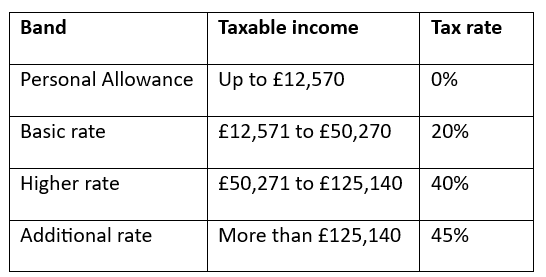The gains you can make before potentially paying Capital Gains Tax (CGT) have halved for the 2024/25 tax year. If you plan to dispose of assets, the change could affect you. Read on to find out when you could be liable for CGT and some steps you might take to manage a bill.
CGT is a tax on the profit you make when you sell certain assets that have increased in value. CGT could be due when disposing of a range of assets, including:
- Shares that aren’t held in a tax-efficient wrapper
- Property that isn’t your main home
- Personal possessions that are worth £6,000 or more, excluding your car.
The amount of profit you can make during the year before CGT is due has fallen significantly over the last couple of years.
The Annual Exempt Amount has fallen to £3,000 in 2024/25
According to research from the University of Warwick, less than 3% of UK adults paid CGT in the decade to 2020. In fact, in any given year, just 0.5% of adults were liable for CGT. Yet, the total amount paid through CGT tripled between 2010 and 2020 to £65 billion.
The government has substantially reduced the amount of profit you can make before CGT is due, so the number of people paying the tax could soar over the coming years.
In 2022/23, the amount you could make before CGT was due, known as the “Annual Exempt Amount”, was £12,300. This was reduced to £6,000 in 2023/24, and from 6 April 2024, it is reduced further to just £3,000.
If your total profits during the tax year exceed the Annual Exempt Amount, your CGT bill will depend on which tax band(s) the taxable gains fall into when added to your other income. In 2024/25, if you’re a:
- Higher- or additional-rate taxpayer, your CGT rate will be 20% (24% on gains from residential property)
- Basic-rate taxpayer, you may benefit from a lower CGT rate of 10% (18% on gains on residential property) if the taxable amount falls within the basic-rate Income Tax band.
So, if you have assets to sell, considering how to mitigate a potential bill could be valuable.
6 practical ways you could reduce your Capital Gains Tax bill
1. Time the sale of your assets
The Annual Exempt Amount cannot be carried forward to a new tax year if you don’t use it. Timing the disposal of your assets could help you make use of the allowance to minimise your bill. For instance, you might hold off selling an asset until a new tax year starts if you’ve already exceeded the Annual Exempt Amount in the current year.
2. Pass assets to your spouse or civil partner
The Annual Exempt Amount is an individual allowance, and you can pass assets to your spouse or civil partner without tax implications. So, if you’ve used your Annual Exempt Amount, transferring an asset to your partner before you dispose of it to use their allowance might be an option you want to consider.
3. Use your ISA to invest tax-efficiently
An ISA is a tax-efficient wrapper for saving or investing. Returns and profits made on investments held in an ISA are not liable for CGT. So, if you want to invest, choosing an ISA may help you mitigate a tax bill.
If you already hold investments outside of an ISA, you could sell the investments and immediately buy them back within your ISA. This strategy of moving your investments to a tax-efficient account is known as “Bed and ISA”.
In the 2024/25 tax year, you can add up to £20,000 to ISAs.
4. Use a pension for long-term investments
Like ISAs, pensions offer a tax-efficient way to invest – investments held in a pension are not liable for CGT.
In the 2024/25 tax year, the pension Annual Allowance is £60,000 for most people. This is the maximum amount you can pay into your pension during the tax year while still benefiting from tax relief. However, you can only claim tax relief on up to 100% of your annual earnings.
If you’ve already taken an income from your pension or are a high earner, your Annual Allowance could be as low as £10,000. If you’re not sure what your Annual Allowance is, please contact us.
The Annual Allowance can be carried forward for up to three tax years. So, if you’ve used all your Annual Allowance in 2024/25, you may want to review your pension contribution in previous tax years.
Before you boost your pension, considering your investment goals and time frame might be essential. You cannot usually access the money in your pension until you’re 55, rising to 57 in 2028, so it isn’t the right option for everyone.
5. Manage your taxable income
As mentioned above, basic-rate taxpayers may benefit from a lower rate of CGT if the gains fall within the basic-rate tax band. As a result, managing your taxable income to stay below Income Tax thresholds once expected profits are included could slash a CGT bill.
6. Deduct losses from your gains
It is possible to deduct losses from the profits you make. You must report the losses to HMRC by including them on your tax return. When you report a loss, the amount is deducted from the gains you make in the same tax year.
If your total taxable gain is still above the tax-free allowance, you can deduct unused losses from previous tax years. If the losses reduce your gain to the tax-free allowance, you can carry forward the remaining losses to a future tax year.
Contact us to talk about your tax liability
Whether you’d like to understand how you could reduce a potential CGT bill or you want to review your financial plan with tax efficiency in mind, please contact us. We could help you identify ways to cut your tax bill in 2024/25 and beyond.
Please note:
This blog is for general information only and does not constitute advice. The information is aimed at retail clients only.
Please do not act based on anything you might read in this article. All contents are based on our understanding of HMRC legislation, which is subject to change.
The value of your investments (and any income from them) can go down as well as up and you may not get back the full amount you invested.
Past performance is not a reliable indicator of future performance.
Investments should be considered over the longer term and should fit in with your overall attitude to risk and financial circumstances.
The Financial Conduct Authority does not regulate tax planning.












